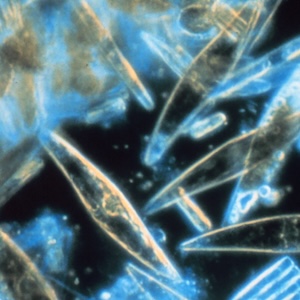A procedure to update quality indices based on species abundances: an example using the EPI-L diatom index

Submitted: 26 July 2023
Accepted: 27 October 2023
Published: 20 November 2023
Accepted: 27 October 2023
Abstract Views: 983
PDF: 200
Supplementary Tab. S1: 58
Supplementary Tab. S2: 60
HTML: 7
Supplementary Tab. S1: 58
Supplementary Tab. S2: 60
HTML: 7
Publisher's note
All claims expressed in this article are solely those of the authors and do not necessarily represent those of their affiliated organizations, or those of the publisher, the editors and the reviewers. Any product that may be evaluated in this article or claim that may be made by its manufacturer is not guaranteed or endorsed by the publisher.
All claims expressed in this article are solely those of the authors and do not necessarily represent those of their affiliated organizations, or those of the publisher, the editors and the reviewers. Any product that may be evaluated in this article or claim that may be made by its manufacturer is not guaranteed or endorsed by the publisher.
Similar Articles
- Rossano Bolpagni, Carolina Amadio, Emily T. Johnston, Erica Racchetti, New physical and chemical perspectives on the ecology of Thorea hispida (Thoreaceae) , Journal of Limnology: Vol. 74 No. 2 (2015)
- Alfonso Esquivel, Aude Barani, Miroslav Macek, Ruth Ruth Soto-Castor, Celia Bulit, The trophic role and impact of plankton ciliates in the microbial web structure of a tropical polymictic lake dominated by filamentous cyanobacteria , Journal of Limnology: Vol. 75 No. s1 (2016): Proceedings of the 6th National Congress of Limnology
- Reinhard GERECKE, Marco CANTONATI, Daniel SPITALE, Elisabeth STUR, Sofia WIEDENBRUG, The challenges of long-term ecological research in springs in the northern and southern Alps: indicator groups, habitat diversity, and medium-term change , Journal of Limnology: Vol. 70 No. s1 (2011): Springs: neglected key habitats for biodiversity conservation
- Stefan Sommer, Sarma Nandini, S.S.S. Sarma, Arpat Ozgul, Diego Fontaneto, Rotifers in Lake Orta: a potential ecological and evolutionary model system , Journal of Limnology: Vol. 75 No. s2 (2016): Lake Orta: a new lease on life
- Rocio Fernandez, Sarma Nandini, S.S.S. Nandini, Maria E. Castellanos-Páez, Demographic responses of Heterocypris incongruens (Ostracoda) related to stress factors of competition, predation and food , Journal of Limnology: Vol. 75 No. s1 (2016): Proceedings of the 6th National Congress of Limnology
- Gabriela E. Musin, Florencia Rojas Molina, Federico Giri, Verónica Williner, Structure and density population of the invasive mollusc Limnoperna fortunei associated with Eichhornia crassipes in lakes of the Middle Paraná floodplain , Journal of Limnology: Vol. 74 No. 3 (2015)
- Branaavan Sivarajah, Jesse C. Vermaire, John P. Smol, Assessing the potential environmental factors affecting cladoceran assemblage composition in arsenic-contaminated lakes near abandoned silver mines , Journal of Limnology: Vol. 80 No. 2 (2021)
- Carmen Gabaldón, Miloslav Devetter, Josef Hejzlar, Karel Šimek, Petr Znachor, Jiří Nedoma, Jaromir Seda, Repeated flood disturbance enhances rotifer dominance and diversity in a zooplankton community of a small dammed mountain pond , Journal of Limnology: Vol. 76 No. 2 (2017)
- Diego Fontaneto, Alejandro Martínez, Stefano Mammola, Aldo Marchetto, The use of the term ‘limnology’ and its scientometrics consequences for limnologists , Journal of Limnology: Vol. 80 No. 3 (2021): Celebratory Issue - 80th Anniversary of the Journal of Limnology
- Daniela Ghia, Gianluca Fea, Fabio Ercoli, Roberto Sacchi, Escape rooms: behavioural response of two invasive crayfish species under water decline scenarios , Journal of Limnology: Vol. 83 (2024)
<< < 24 25 26 27 28 29 30 31 32 33 > >>
You may also start an advanced similarity search for this article.

 https://doi.org/10.4081/jlimnol.2023.2151
https://doi.org/10.4081/jlimnol.2023.2151





